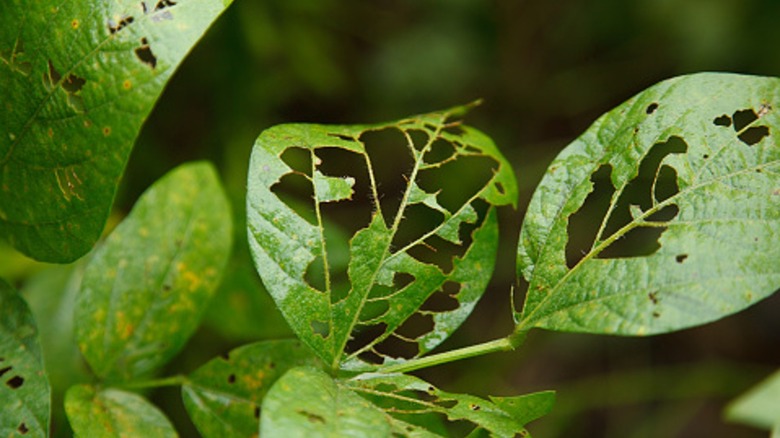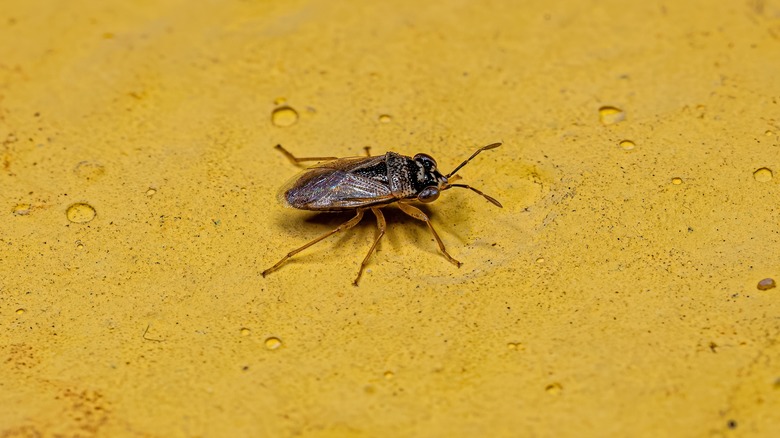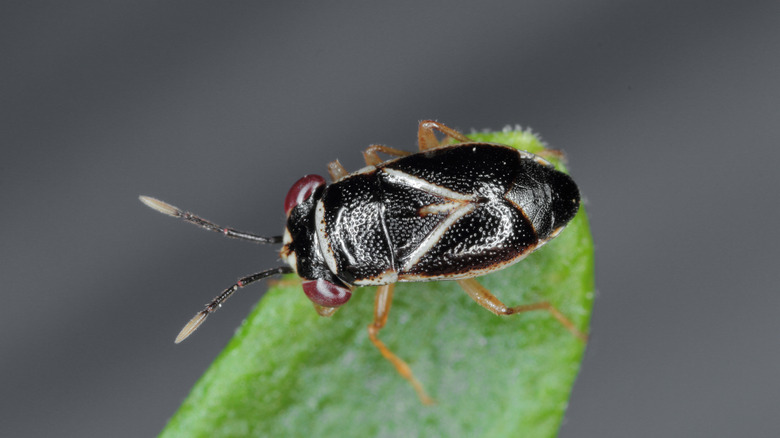The Unusual-Looking Bug That Will Help Keep Pests Out Of Your Garden
There are many ways to keep pests out of your garden, including pesticides, physical barriers, strategic planting, and more. Creating a welcoming environment for predatory bugs is one of the most affordable ways to keep your plants safe. These critters feed on pests that eat your precious fruit, vegetables, flowers, or other plants.
There are quite a few creatures that provide this protection without harming your garden at all, like Geocoris, which are commonly known as big-eyed bugs. These unusual-looking critters got their name from their large, protruding eyes. They're about ⅙ of an inch long and oval-shaped. Big-eyed bugs range in color from all-black to yellow with reddish-brown spots. They are great for gardens because they eat plant-damaging bugs like aphids, mites, and caterpillars. Big-eyed bugs use their sharp mouths to kill these pests, and then consume their insides. If pests are wreaking havoc on your garden, big-eyed bugs might be an unexpected solution to your problem.
What you should know about big-eyed bugs
If you're curious about how to reap the benefits of big-eyed bugs, you should know that they aren't available for purchase. However, they are often found in gardens, crops, and other natural landscapes, so there is a chance that they'll make their way into your garden on their own. Of all of the prey big-eyed bugs consume, they're particularly drawn to spider mites. In fact, adult big-eyed bugs eat about 80 spider mites a day, according to Tennesee State University's College of Agriculture.
If you suspect that you have found a big-eyed bug in your garden, you'll need to take a closer look. This is because there are a few species of bugs that look similar but will actually damage your plants, including false chinch bugs and black grass bugs. Chinch bugs are either black with white wing markings, or (when younger) have red or orange-colored markings and no wings. Black grass bugs are shiny or grayish-black with either black or red legs. Confirm that the suspected big-eyed bugs do not fit either of these descriptions before you allow them to roam your garden freely.
How to welcome big-eyed bugs into your garden
There are a few changes you can make to encourage big-eyed bugs to help protect your plants. Pesticides can prevent these critters from making their way into your garden, but you can eliminate this problem by switching to a selective pesticide that only works against the specific pests you want to get rid of rather than all bugs. The next time you head to the store or browse the internet for pesticides, take a close look at the labels to determine what kind of bugs they target.
Big-eyed bugs enjoy diverse environments with lots of different plants. This provides them with options when it comes to hiding places and food sources. Consider adding a wide variety of plants to your garden to attract these pest-eating bugs; they especially enjoy goldenrod, pigweed, and soybeans. Once you have put these changes into place, begin monitoring your garden to determine whether you're successfully attracting big-eyed bugs.


